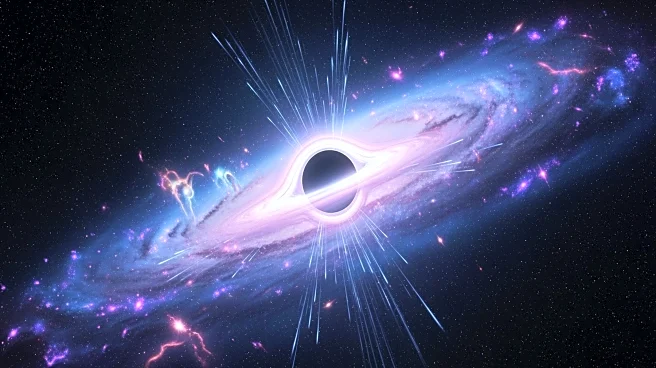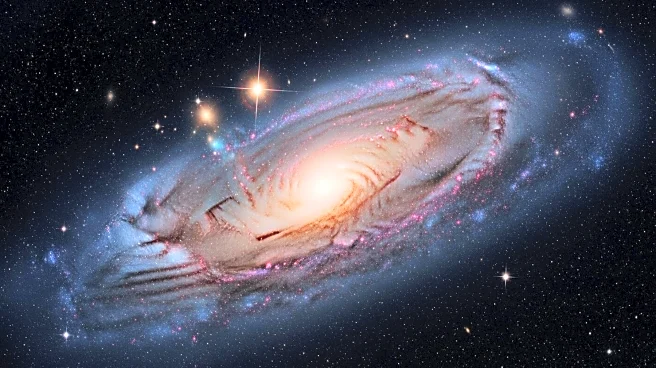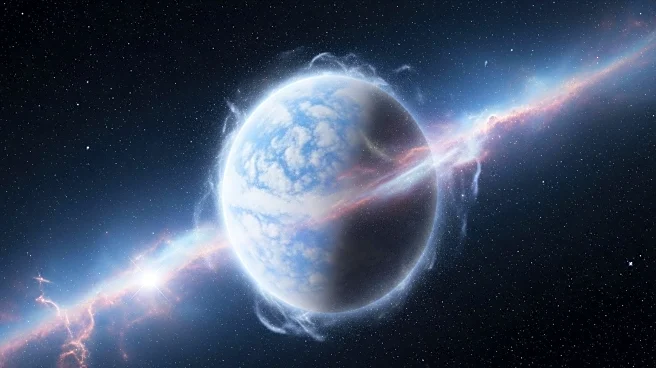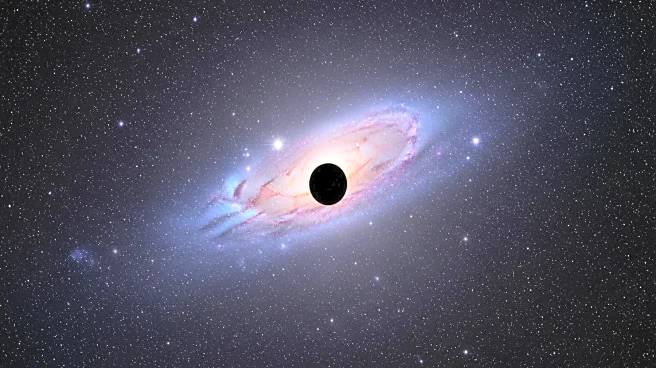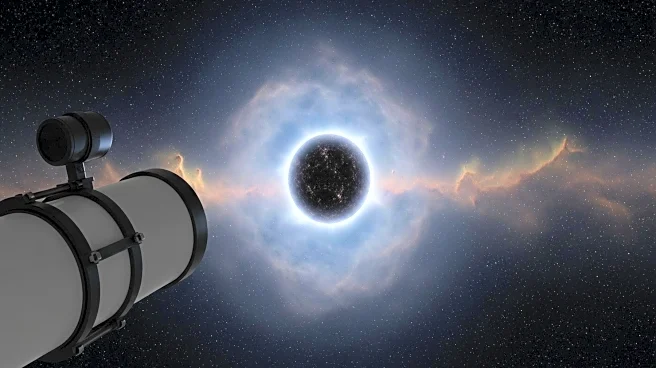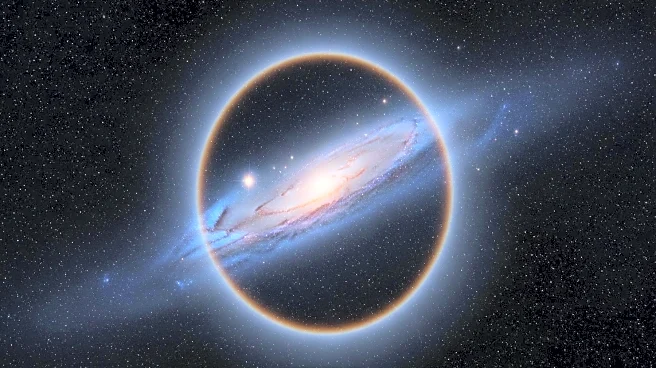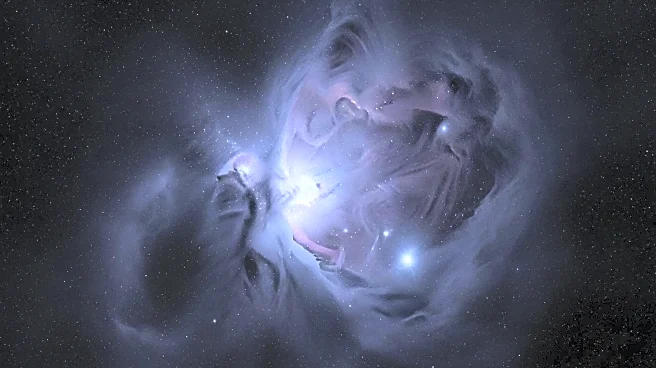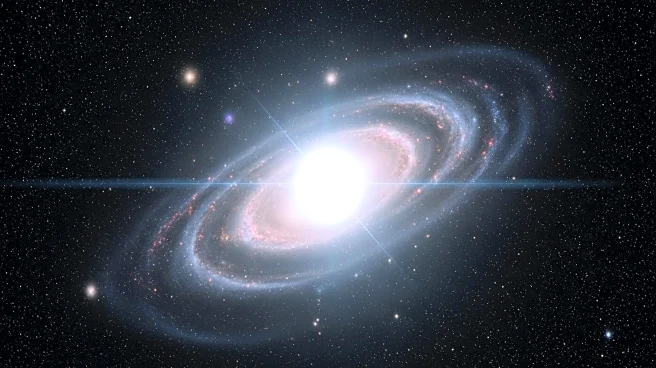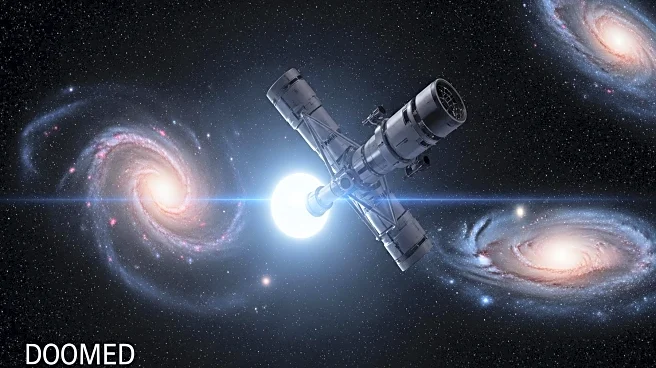What's Happening?
The James Webb Space Telescope (JWST) has captured new images of the jets emanating from the supermassive black hole at the center of the Messier 87 galaxy, located 54 million light-years from Earth. These
jets, composed of subatomic particles, are moving at nearly the speed of light. The images, published in the journal Astronomy & Astrophysics, provide unprecedented clarity of the jet's structure, including a massive counter-jet moving in the opposite direction. The M87 black hole, first imaged by the Event Horizon Telescope in 2019, has been a subject of extensive study due to its proximity and brightness across the electromagnetic spectrum. The JWST's infrared images have allowed researchers to isolate and study the jet's features, offering new insights into its composition and interaction with cosmic surroundings.
Why It's Important?
The discovery is significant as it enhances the understanding of jet physics, which is crucial for comprehending the behavior of supermassive black holes. The M87 black hole serves as an ideal laboratory due to its brightness and proximity, allowing scientists to study the dynamics of these cosmic phenomena. The findings could lead to advancements in astrophysics, particularly in understanding how black holes influence their environments and the role of magnetic fields in jet formation. This research contributes to the broader knowledge of cosmic structures and the fundamental processes governing the universe.
What's Next?
Future observations at different wavelengths will continue to refine the understanding of the M87 jets. Researchers aim to explore how these jets interact with their surroundings and what they are composed of. Continued study may reveal more about the magnetic fields and the spin of the black hole, potentially leading to breakthroughs in black hole physics. The JWST's capabilities will be pivotal in capturing more detailed images, helping scientists inch closer to a complete picture of these cosmic phenomena.
Beyond the Headlines
The study of M87's jets could have implications for understanding the role of black holes in galaxy formation and evolution. As researchers delve deeper into the physics of jets, they may uncover connections to dark matter and energy distribution in the universe. The ethical dimension involves the allocation of resources for space exploration, balancing scientific curiosity with practical benefits for humanity.
